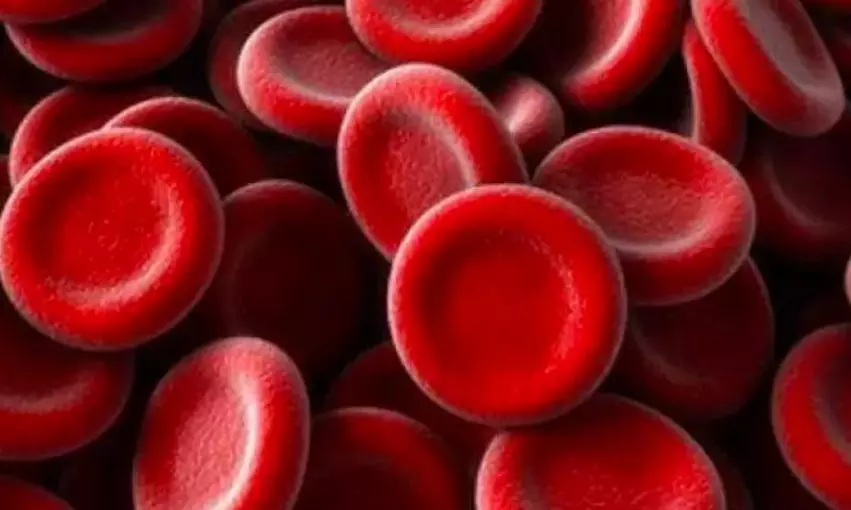Sickle Cell Anaemia Test Made Easy, Fast, Better

Hyderabad: Dr Giriraj Ratan Chandak Sir J.C. Bose Fellow at CCMB and director of Sickle Cell Anaemia Mission, and his associates have developed a molecular test for screening of the genetic disease with a mere drop of blood.
Though sickle cell anaemia is a fatal disease, only one in three people screened in India is correctly identified as patients or carriers. The new test offers a "one-time screening and diagnosis" and is said to be more precise, quick and cost-effective.
Sickle cell anaemia is a genetic blood disorder that affects millions of individuals, particularly in tribal and rural areas. Early diagnosis is essential for effective treatment, especially for children and carriers, who can be counselled to prevent complications later in life.
Dr Chandak's team is consulting with ICMR, the Union health ministry and NITI Aayog to get his test included in the National Sickle Cell Anaemia portal to improve detection and avoid misidentifications. The test has been validated by the Indian Council of Medical Research (ICMR) with 100 per cent specificity and sensitivity.
Last year, the country launched the National Sickle Cell Anaemia Elimination Mission to eradicate the disease by 2047, aiming to screen 7 crore people aged 0-40 by 2027. Dr Chandak noted that while around 4.3 crore have been screened, issues persist in categorising individuals as normal, carriers, or patients.
His data reveals only one-third are accurately identified as carriers (nearly 3.4 per cent) or patients (0.43 per cent), compared to the expected 9 per cent and 1 per cent respectively, from published literature.
The process developed by Dr Chandok involves collecting just a small drop of blood on a specially designed card, drying it for about half-an-hour, and then using a small punch from the dried blood sample to perform a PCR (polymerase chain reaction) test.
In traditional PCR-based tests, higher volume of blood should be collected through intravenous methods, followed by labour-intensive steps like DNA extraction, quality checks, and then PCR analysis. The new method eliminates these intermediate steps, allowing for direct PCR testing from a tiny blood spot. This significantly reduces the time, cost, and complexity of the procedure.
According to Dr Chandak, the new test has been successfully conducted on thousands of individuals, demonstrating high accuracy. Further, its robustness is established in various settings including antenatal and newborn screening as well as at the population level.
“We have found that this test has a very high specificity and sensitivity, which is critical for screening on a population level,” the researcher stated.
The test is being rolled out in medical colleges and hospitals in Chhattisgarh, Maharashtra, Madhya Pradesh, and Rajasthan. It has been established in institutions like AIIMS Nagpur and the Chhattisgarh Institute of Medical Sciences in Bilaspur.
The cost of the test is between ₹100 and ₹125 per sample, and could decrease further if high-throughput analysis is adopted, making it an affordable option for mass screening.
"Once the test result is confirmed, no further testing is required, streamlining the diagnostic process. The dried blood samples can be easily transported at room temperature, making them ideal for use in remote areas where access to healthcare facilities is limited. In addition, the test can process 96 samples in one go, 300 samples in a day, enabling high-efficiency mass screening campaigns," said Dr Chandak. However, that is also one of the limitations; the test takes 2.30-3.0 hours whether it is one sample or 96 samples.
There are a few other challenges as well that need to be addressed for widespread adoption. "First, while PCR machines have become more common due to the Covid-19 pandemic, they have been out of use for quite some time needing overhaul. Further these set-ups are still not universally available at all primary health centres in rural areas. Ensuring that these centres are equipped with the necessary machinery and trained personnel is a critical next step. Second, the current method of detection takes some time, which is another area for improvement. To overcome this, the team is developing a colour-based detection system using specific dyes that would allow healthcare workers to distinguish between carriers and patients based on different colour shades," Dr Chandak said.
Beyond screening and diagnosis, this test opens new avenues for research into the varying manifestations of sickle cell anaemia. While the disorder is genetic, its symptoms and severity differ widely among patients. Some individuals develop severe complications as early as two or three years old, while others live relatively normal lives until their 30s or 40s. Understanding why these differences occur is a critical area of ongoing research.
The team has been following approximately 4,000 sickle cell patients over the past three years to study these variations. Genetic studies are being conducted to identify markers that could predict a patient’s clinical course and their response to treatments such as hydroxyurea. Around 30 per cent of patients do not respond to hydroxyurea, and the team hopes to develop predictive genetic tests to guide personalised treatment plans.
“We are trying to understand why some individuals respond well to treatment while others don’t. By identifying genetic markers, we can offer more targeted therapies and advice, helping patients manage their condition more effectively,” Dr Chandak stated.
In a recent development, Tata Trust has shown interest in partnering with the researchers to set up testing facilities in five districts around Bhongir, Telangana. Similar discussions are being planned for Andhra Pradesh.

